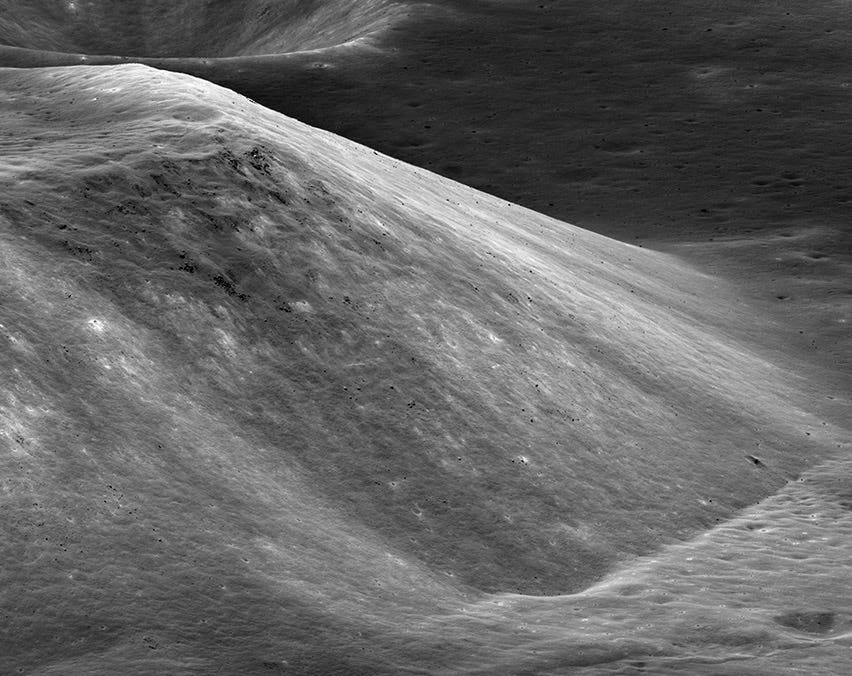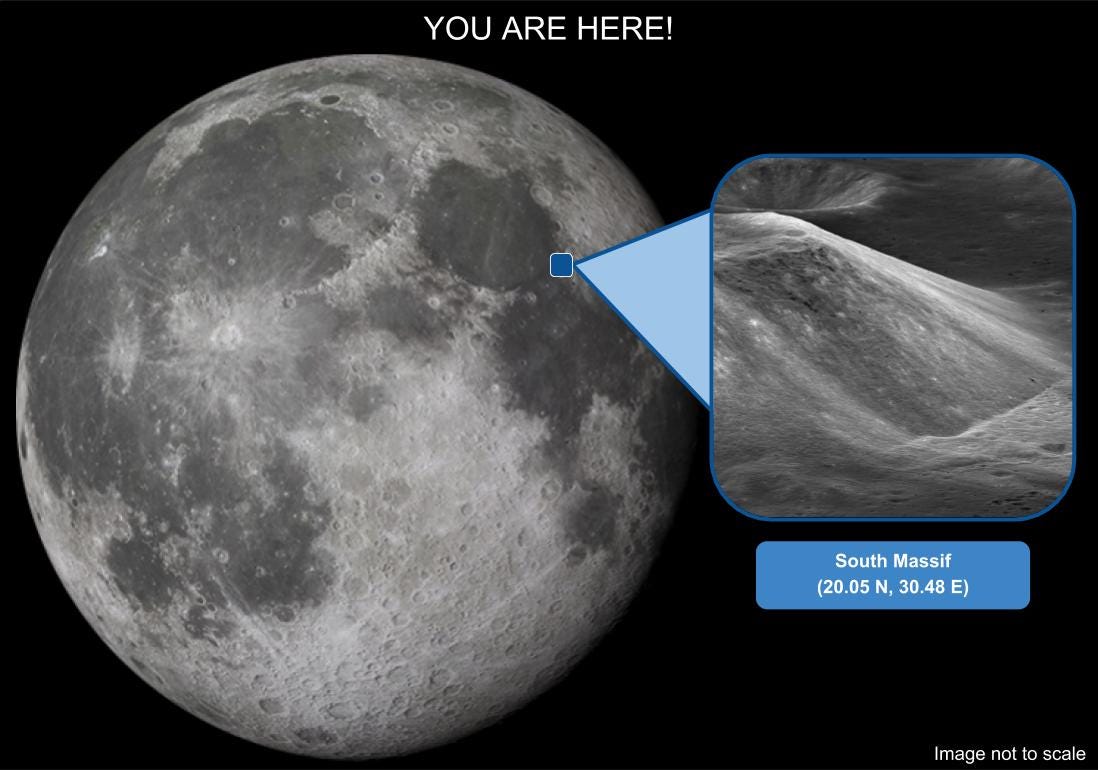Landslide on the Moon
An Apollo 17 sample collection story.
Seen here is a broad mountain, the South Massif, that borders the Taurus Littrow Valley where the Apollo 17 astronauts landed.

One of the objectives of Apollo 17 was to sample the landslide material (having high reflectance). The way this landslide formed is mind boggling. Some ejected material (ejecta) from the impact that created the Tycho crater landed all the way in this region, more than a thousand kilometers away. The shake up caused by these ejecta impacts caused material from the mountain slope to slide down.

Knowing the age of the landslide material would thus give away the age of the Tycho crater. Sampling the landslide material via Apollo 17 determined the age of Tycho to be about 110 million years, a very young age in geological time scales.
Landing in one region enabled us to know about a feature halfway across the Moon! With NASA announcing return of the U.S. to the Moon's surface this week, looking forward to exciting science output from the upcoming commercial lunar landers.

